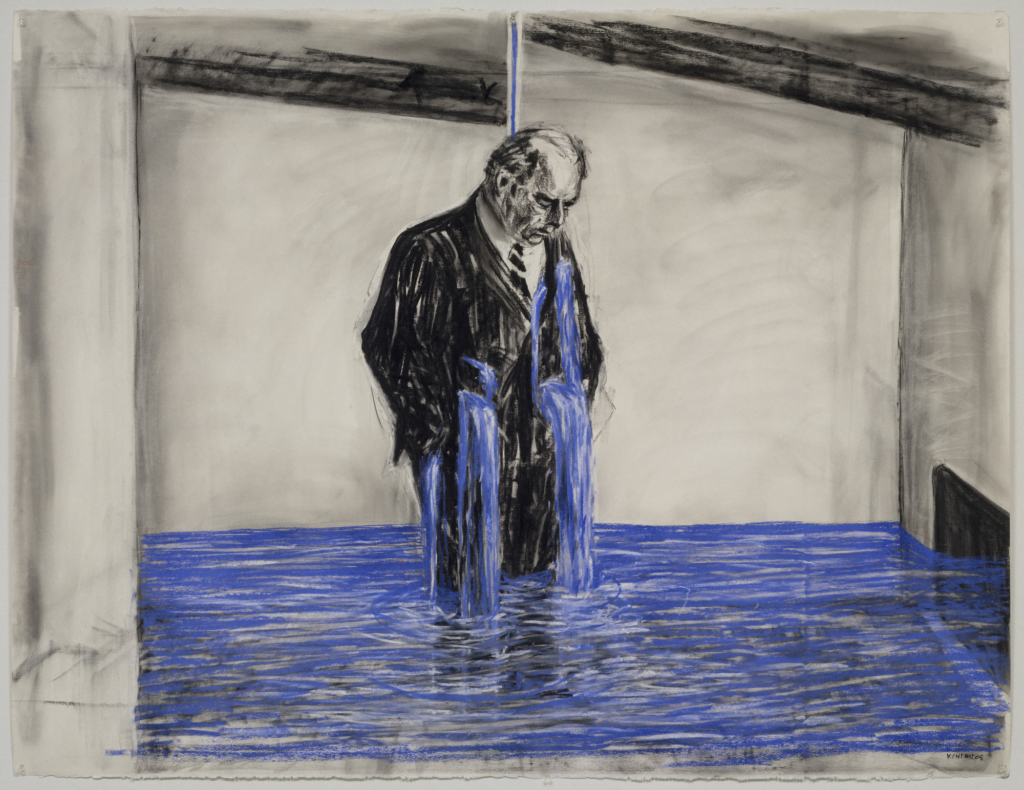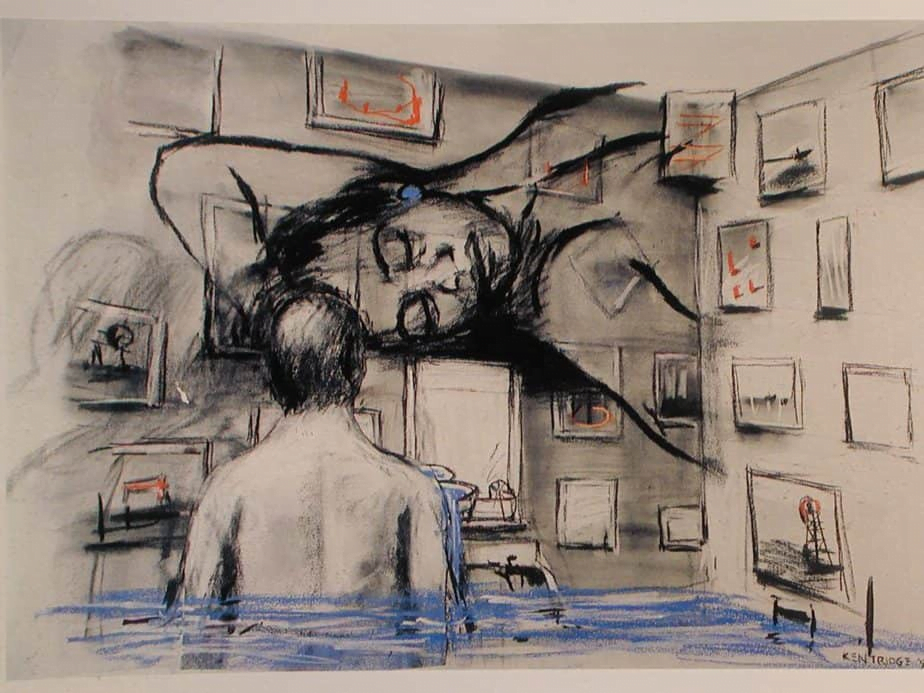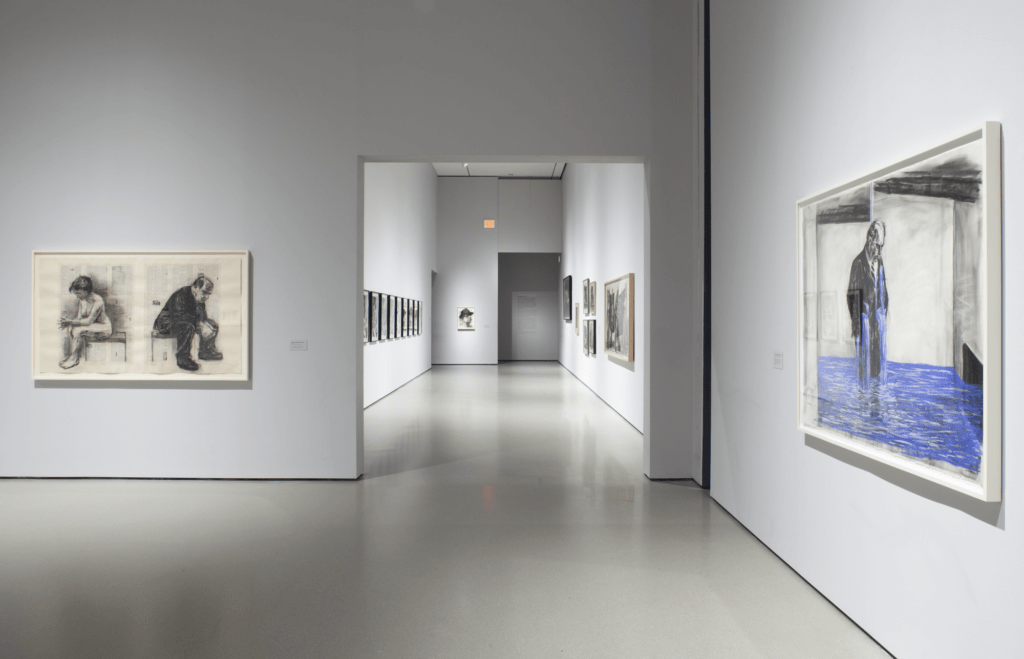William Kentridge BIOGRAPHY

Early Life and Education
William Kentridge was born in the city of Johannesburg, South Africa, on April 28, 1955. He grew up in a culturally diverse and politically charged environment, deeply influenced by the turbulent era of apartheid in South Africa.
Kentridge’s parents were both prominent lawyers who fought against apartheid, and this background played a significant role in shaping his point of view on art and artistic sensibilities.
Kentridge attended the King Edward VII School in Johannesburg, where he showed an early interest in the arts and drama. He went on to study Politics and African Studies at the University of the Witwatersrand, but his passion for art eventually led him to change his focus.
In 1976, he enrolled at the Johannesburg Art Foundation, where he explored various artistic mediums and techniques.
What is William Kentridge known for?

William Kentridge is known for being a multi-talented South African artist, filmmaker, and stage director. His distinctive artistic style combines drawing, animation, and performance to explore themes of history, memory, and social justice.
Career highlights

Artistic Development and Early Career
During his time at the Johannesburg Art Foundation, Kentridge began to develop his distinctive style, incorporating drawing, printmaking, and animation.
He was heavily influenced by German Expressionism and Dadaism, as well as the works of artists like Rembrandt and Goya. Kentridge’s early works often revolved around themes of social and political issues, capturing the struggles and injustices of apartheid South Africa.
In the 1980s, Kentridge gained recognition for his powerful and thought-provoking charcoal drawings, which served as visual commentaries on the political climate of the time.
His art portrayed the complexities and contradictions of the apartheid regime, drawing attention to human suffering and social inequalities.
Rise to International Prominence
As apartheid came to an end in the early 1990s, Kentridge’s art took on new dimensions, exploring broader themes of memory, history, and identity. He introduced stop-motion animation into his artistic repertoire, using his charcoal drawings to create visually striking and emotionally charged films.
One of his most renowned works, “Felix in Exile” (1994), was part of a series called “Drawings for Projection.” Through this series, Kentridge delved into the complexities of post-apartheid South Africa, addressing issues of reconciliation, forgiveness, and the challenges of building a new society.
International acclaim followed, and Kentridge’s art began to be exhibited worldwide. His unique blend of drawing, animation, and storytelling captured the imagination of audiences and art critics alike.
Kentridge’s works were showcased in prestigious art institutions and galleries, earning him a place among the leading contemporary artists globally.
Expansion into Opera and Theater
Beyond the visual arts, Kentridge’s creativity extended to opera and theatre. He collaborated with various opera houses, designing sets and directing productions, incorporating his signature animation and visual storytelling into these performances. His collaborations with the Metropolitan Opera in New York, the Royal Opera House in London, and the Festival d’Avignon in France received widespread acclaim.
Throughout his career, Kentridge continued experimenting with new artistic mediums and techniques, never limiting himself to a single form of expression. He produced a diverse body of work, including prints, drawings, sculptures, and installations, all interconnected by his thematic exploration of South Africa’s history, politics, and the human condition.
William Kentridge List of Work

William Kentridge’s Films
William Kentridge’s artistic repertoire extends beyond the visual arts into the realm of filmmaking. Through a series of compelling and thought-provoking films, Kentridge further explores his unique visual language, storytelling, and animation techniques.
Many of his films are part of the “Drawings for Projection” series, where he combines charcoal drawings and animation to create captivating narratives that delve into social and political themes.
Here is a selection of Kentridge’s notable films:
- 1989 Johannesburg, 2nd Greatest City After Paris (part of the Drawings for Projection)
- 1990 Monument (part of the Drawings for Projection)
- 1991 Mine (part of the Drawings for Projection)
- 1991 Sobriety, Obesity & Growing Old (part of the Drawings for Projection)
- 1994 Felix in Exile (part of the Drawings for Projection)
- 1996–97 Ubu Tells the Truth
- 1998 Weighing… and Wanting (part of the Drawings for Projection)
- 1999 Stereoscope (part of the Drawings for Projection)
- 1999 Shadow Procession
- 2001 Medicine Chest
- 2003 Automatic Writing
- 2003 Tide Table (part of the Drawings for Projection)
- 2003 Journey to the Moon
- 2009 Kentridge and Dumas in Conversation
- 2011 Other Faces (part of the Drawings for Projection)
- 2015 Notes Toward a Model Opera
Kentridge’s films have been widely recognized and screened at prestigious venues, including the 2004 Cannes Film Festival. Through these films, he continues to challenge conventional storytelling, using animation and drawings to create powerful visual narratives that resonate with audiences worldwide.
Awards and Recognition
Kentridge’s contributions to the arts have earned him numerous awards and accolades. In 2010, he was awarded the Kyoto Prize, one of the most prestigious international awards in arts and philosophy.
He has also been honored with the Commandeur des Arts et des Lettres by the French government and the Princess of Asturias Award for the Arts.
Legacy and Influence
William Kentridge’s artistic legacy extends far beyond his works. He has been an influential figure for younger generations of artists in South Africa and worldwide.
His commitment to addressing social and political issues through art, coupled with his innovative use of animation and drawing, has inspired countless artists to use their creativity as a tool for activism and change.
Today, William Kentridge remains an active and prolific artist, engaging in new projects and exhibitions that continue to challenge and captivate audiences around the globe.
William Kentridge and NFT
While William Kentridge’s foray into the world of NFTs is still relatively recent, it represents an exciting exploration of the intersection between traditional art and the digital frontier. By embracing this innovative technology, Kentridge remains at the forefront of artistic experimentation, leaving an indelible mark on the evolving landscape of digital art.
More about William Kentridge
Visit the official website to explore the full list of Kentridge’s works and stay informed about recent updates.
